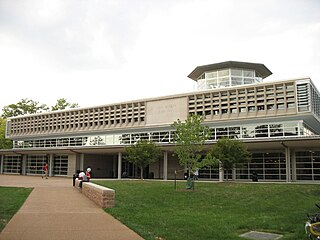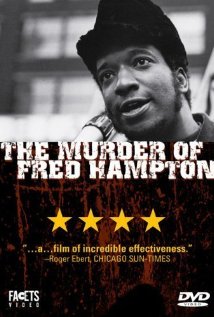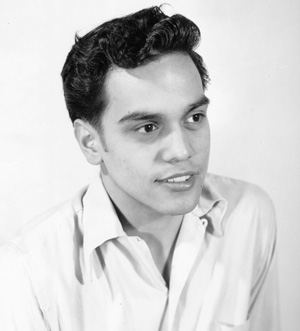
Fredrick Allen Hampton Sr. was an American activist. He came to prominence in his late teens and very early 20s in Chicago as deputy chairman of the national Black Panther Party and chair of the Illinois chapter. As a progressive African American, he founded the anti-racist, anti-classist Rainbow Coalition, a prominent multicultural political organization that initially included the Black Panthers, Young Patriots, and the Young Lords, and an alliance among major Chicago street gangs to help them end infighting and work for social change. A Marxist–Leninist, Hampton considered fascism the greatest threat, saying, "nothing is more important than stopping fascism, because fascism will stop us all."

Bill Kurtis is an American television journalist, television producer, narrator, and news anchor.

Danny Lyon is an American photographer and filmmaker.
Eyes on the Prize: America's Civil Rights Movement is an American television series and 14-part documentary about the 20th-century civil rights movement in the United States. The documentary originally aired on the PBS network, and it also aired in the United Kingdom on BBC2. Created and executive produced by Henry Hampton at his film production company Blackside, and narrated by Julian Bond, the series uses archival footage, stills, and interviews by participants and opponents of the movement. The title of the series is derived from the title of the folk song "Keep Your Eyes on the Prize", which is used as the opening theme music in each episode.
Henry Eugene Hampton Jr. was an African-American filmmaker. His production company, Blackside, Inc., produced over 80 programs—the most recognizable being the documentary Eyes on the Prize, which won Emmy Awards, Peabody Awards, and was nominated for an Oscar.
Harold Michael Gray was an American writer, screenwriter, cinematographer, film producer and director.
Robin Spry was a Canadian film director, producer and writer. He was perhaps best known for his documentary films Action: The October Crisis of 1970 and Reaction: A Portrait of a Society in Crisis about Quebec's October Crisis. His 1970 film Prologue won the BAFTA Award for Best Documentary.
Albert Bernard Grossman was an American entrepreneur and manager in the American folk music and rock and roll scene. He was famous as the manager of many of the most popular and successful performers of folk and folk-rock music, including Bob Dylan, Janis Joplin, Peter, Paul and Mary, the Band, Odetta, Gordon Lightfoot, and Ian & Sylvia.
Nicholas Schaffner was an American non-fiction author, journalist, and singer-songwriter.

Washington University Libraries is the library system of Washington University in St. Louis. The system includes 12 libraries and over 5.5 million volumes. The John M. Olin Library is the central library.

The Murder of Fred Hampton is a 1971 American documentary film about the short life and death of Fred Hampton, a young African-American civil rights activist in Chicago and leader of the Illinois Black Panther Party. During the film's production, Hampton was fatally shot on December 4, 1969, in a pre-dawn raid at his apartment by the Chicago Police Department. The raid was revealed to have been organized in cooperation with the FBI.

American Revolution 2 is a 1969 documentary on the 1968 Democratic National Convention and its aftermath. Part of the film focuses on the creation of an alliance between the Young Patriots Organization and local Black Panthers. On its release Roger Ebert gave the film four stars, while The New York Times reviewer Roger Greenspun was more critical. The film was released on DVD in 2007 and received generally positive reviews.
Howard Alk was an American filmmaker based in Chicago, Illinois, and an original co-founder of The Second City theater troupe. In the 1960s he began to work in film with the Chicago Film Group, filming and directing documentaries, completing American Revolution 2 (1969) and The Murder of Fred Hampton (1971). He also collaborated for years with singer/songwriter Bob Dylan, producing films with him through 1981.

Domingo Francisco Juan Esteban "Dom" Orejudos, Secundo, also widely known by the pen names Etienne and Stephen, was an openly gay artist, ballet dancer, and choreographer, best known for his ground-breaking masculine gay male erotica beginning in the 1950s. Along with artists George Quaintance and Touko Laaksonen – with whom he became friends – Orejudos' leather-themed art promoted an image of gay men as strong and masculine, as an alternative to the then-dominant stereotype as weak and effeminate. With his first lover and business partner Chuck Renslow, Orejudos established many landmarks of late-20th-century gay male culture, including the Gold Coast bar, Man's Country bathhouse, the International Mr. Leather competition, Chicago's August White Party, and the magazines Triumph, Rawhide, and Mars. He was also active and influential in the Chicago ballet community.
Helen Balfour Morrison was an American photographer best known for her collaborations with dancer Sybil Shearer. Her work is in the collection of the Museum of Modern Art, the Chicago Film Archives, the Smithsonian Archives of American Art as well as many other institutions.
Gordon Weisenborn was an American director, producer, writer, and cinematographer specializing in sponsored and educational films. His works express a style that blends naturalism and lyricism with modernist abstraction. Many of Weisenborn's films address race and issues of diversity, and his film People Along the Mississippi (1952), produced with John Barnes, is credited as being the first classroom film to depict interracial friendship. He worked with John Barnes on the Academy Award nominated film The Living City (1953), and won over 70 national and international awards for films and productions. He was listed as one of the top 20 makers of specialized film by the Directors Guild.
Ronn Pitts was an American filmmaker who gained prominence through documenting the civil rights movement in Chicago during the 1960s and 1970s. Pitts was a native of Bronzeville, Chicago. He is most notable for having broken the color barrier in Chicago's film industry, becoming the first black filmmaker to be hired by the NFL, and the first black professor hired in the film department at Columbia College.
Tom Palazzolo is an American experimental filmmaker, photographer, and painter. From St. Louis, Missouri, Palazzolo moved to Chicago, Illinois in 1960 to attend the School of the Art Institute of Chicago. Palazzolo is most known for his Chicago-centric documentary films. He is recognized for his ability to reveal the realities of the working class and urban life. Utilizing the Cinéma vérité style in films such as Jerry's (1976), his perspective often include panoramic views of a place or event. Palazzolo's editing style is said to add a sense of humor while still portraying his subjects honestly. He was an important part of the underground film scene in Chicago during the 1960-70s that set itself apart from the lights of Hollywood and New York City.

Akua Njeri is an American writer, activist and former member of the Illinois Chapter of the Black Panther Party. Njeri was present at the December 4, 1969, police raid in which her fiancé, Fred Hampton, and Mark Clark were killed at the Chicago apartment she and Hampton shared. She is the mother of their son Fred Hampton Jr., born after his father's assassination.

William O'Neal was an American FBI informant in Chicago, Illinois, where he infiltrated the local Black Panther Party (BPP). He is known for being the catalyst for the 1969 police/FBI assassination of Fred Hampton, head of the Illinois BPP.








